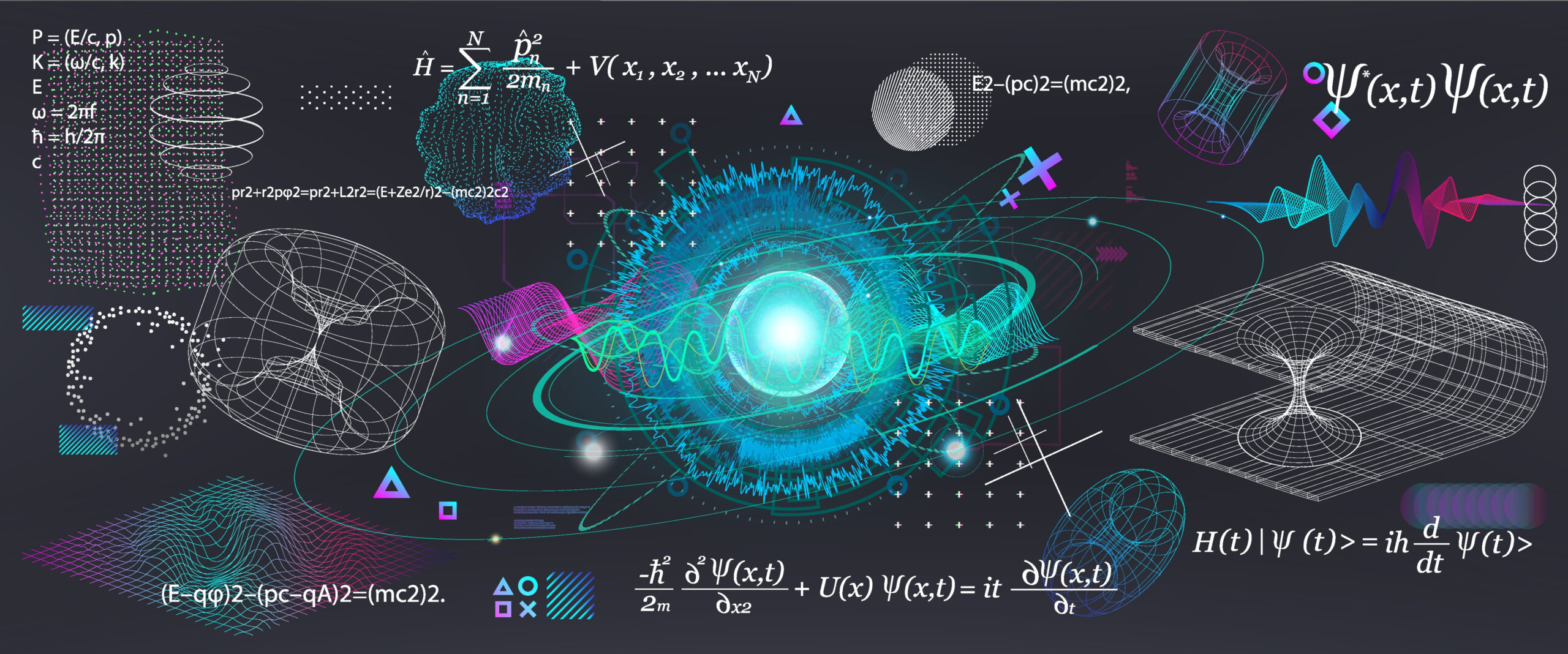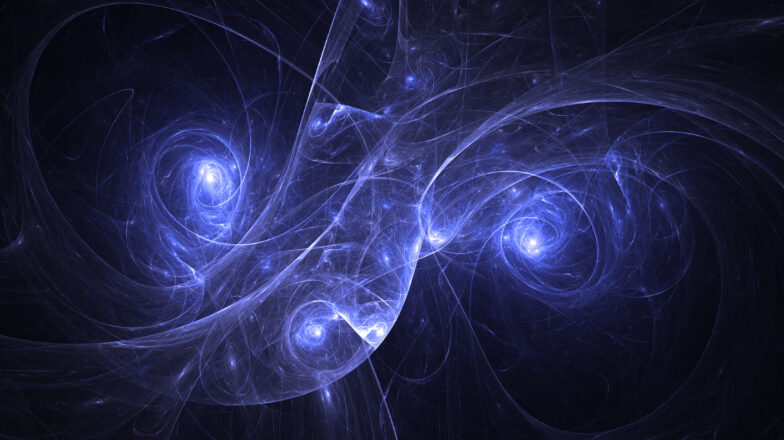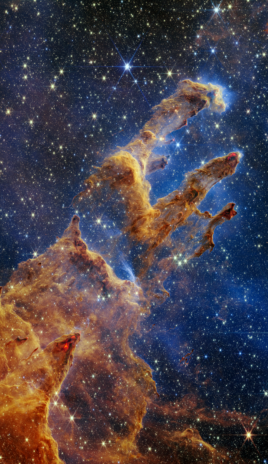More Evidence for a Beautiful Universe
I’m frequently asked to debate whether the universe exhibits extraordinary fine-tuning. On one recent podcast, what was proposed as a debate on cosmic fine-tuning turned into an affirmation that the universe is designed for observability.
Physics Podcast “Debate”
I was interviewed by Ukrainian physicist Mikhail Abukumov on the subject of the fine-tuning of the universe for the possible existence and benefit of human beings. (Abukumov has translated my debate with Oxford University chemist Peter Atkins on the British radio/podcast show Unbelievable? into Russian.) Abukumov paired me up with Russian physicist Alexey Burov, who is presently a staff scientist at Fermi Lab in Batavia, Illinois. Abukumov presumed that this podcast episode would be a debate about fine-tuning since he was aware that my books and articles on cosmic fine-tuning were different from the papers and articles written by Burov.
There was no debate. What I have written on cosmic fine-tuning complemented what Burov had written, and what Burov had written complemented what I had written. Anyone can watch or listen to the “debate” here.
Universe Designed for Observability
Both Alexey Burov and his son Lev Burov are theoretical physicists. Together, they wrote a paper titled Genesis of a Pythagorean Universe.1 The paper is equation-free and, for the most part, can be understood by readers without a degree in physics.
Genesis of a Pythagorean Universe complements what I wrote in my book, Why the Universe Is the Way It Is, concerning how the universe is designed for observability. In my book, I explained how there’s a relatively narrow time window in the history of the universe during which astronomers can observe 100% of the universe’s past history. Humans are inside that time window now. I also demonstrated that we are living in the one location within this vast universe where intelligent physical life is possible, and where that intelligent life can observe 100% of the past history of the universe. I argued that perhaps our epoch in cosmic history or our location might be coincidental, but not both simultaneously. I concluded that the most rational reason for why we exist at both the ideal time epoch and location is that Someone wanted us to read the entirety of the universe’s “book” so that we can fully comprehend his glory, power, care, righteousness, and other attributes (Psalm 19:1–4, 50:6, 97:6; Romans 1:18–20).
Balance between Complexity and Simplicity
Alexey and Lev Burov made a similar argument based on the laws of physics. They explained how the laws of physics are complex enough to make our existence possible, yet simple enough to allow us to discover and understand those laws and their significance in allowing us to exist and fulfill the purposes for which the Creator created us. They pointed out that the minimum complexity of the laws of physics that would permit us to exist and thrive on one planet equals the maximum complexity of those laws that we could conceivably discover. They wrote, “Every little increase in complexity of the laws would create a tremendous jump in difficulty of their discovery, but if they were even a little simpler, the universe would have lacked the structural variety of life, not to mention human brains.”2 This equality, they argue, has no naturalistic explanation. The multiverse cannot account for it. Only a personal Creator who wanted us to exist and discover him explains such an extraordinary equality.
The Burovs demonstrate that what makes the equality a powerful testimony of God’s existence and the degree to which he has fine-tuned the universe for our benefit is that we can prove that the laws of physics are unchanged and noncontradictory throughout the entire space-time continuum of the universe, in some cases to eighteen places of the decimal! Additionally, we can show that the laws of physics apply over a size scale range of 1045, from the largest-sized structures in the universe, like the cosmic web, down to the smallest ones, such as the top quark and the Higgs boson. As the Burovs conclude, an Ultimate Mind is necessary not only to explain the mathematical nature of the laws of physics but also to continuously guarantee the noncontradiction of all the laws of physics.
Beauty Principle
Another testimony of God’s existence and his designs comes from the observation that the laws of physics are described by equations that are extraordinarily beautiful and elegant. For example, we see the principles of symmetry, conservation, and equivalence manifested in the physical laws. We note that the laws are designed to fulfill multiple purposes simultaneously. This beauty and elegance are evident throughout the entire size scale range of 1045. The beauty and elegance of the physical laws are so profound that it caused atheist theoretical physicist Eugene Wigner,3 a Nobel Laureate, to declare, “The miracle of the appropriateness of the language of mathematics for the formulation of the laws of physics is a wonderful gift which we neither understand nor desire. We should be grateful for it.”4 The Burovs point out that Wigner’s conclusion concerning this wonderful gift that we should be grateful for “can only have meaning if a mind to be grateful to is implied.”5
The Burovs’ demonstrations remind me of the best advice I ever got from my undergraduate physics professors. That advice: the key to obtaining the correct answer on a physics problem assignment is to look for the solution that is described by the most beautiful and elegant equations.
The undeniable beauty and elegance of the mathematical equations that describe the laws of physics provide profound evidence for God and his attributes. Humans are the only species of life on Earth capable of discovering the laws of physics. We’re also uniquely endowed with the aesthetic sense to comprehend and value beauty and elegance. That capability has no survival advantage. In fact, it’s a survival disadvantage. It finds explanation only in the context of a Creator who values and enjoys beauty and elegance and who wants us, as beings created in his image, to also value and enjoy beauty and elegance.
Endnotes
- Alexey Burov and Lev Burov, “Genesis of a Pythagorean Universe,” in Trick or Truth? The Mysterious Connection between Physics and Mathematics, edited by Anthony Aguirre, Brendan Foster, and Zeeya Merali (Switzerland: Springer International Publishing, 2016): 157–70, doi:10.1007/978-3-319-27495-9.
- Alexey Burov and Lev Burov, “Metaphysical Status of Physical Laws,” in Plato in Late Antiquity, the Middle Ages and Modern Times: Selected Papers from the Seventeenth Annual Conference of the International Society for Neoplatonic Studies, held in Ottawa, Canada (2019), edited by John F. Finamore and Mark Nyvlt (Lydney, UK: The Prometheus Trust, 2020): 130. This paper is available free in its entirety at http://www.prometheustrust.co.uk/Metaphysical_Status_of_Physical_Laws.pdf.
- Andrew Szanton, The Recollections of Eugene P. Wigner: As Told to Andrew Szanton (New York: Plenum, 1992), 60–61.
- Eugene Wigner, “The Unreasonable Effectiveness of Mathematics in the Natural Sciences. Richard Courant Lecture in Mathematical Sciences Delivered at New York University, May 11, 1959,” Communications on Pure and Applied Mathematics 13, issue 1 (1960): 14, doi:10.1002/cpa.3160130102.
- Burov and Burov, “Genesis of a Pythagorean Universe,” p. 168.






